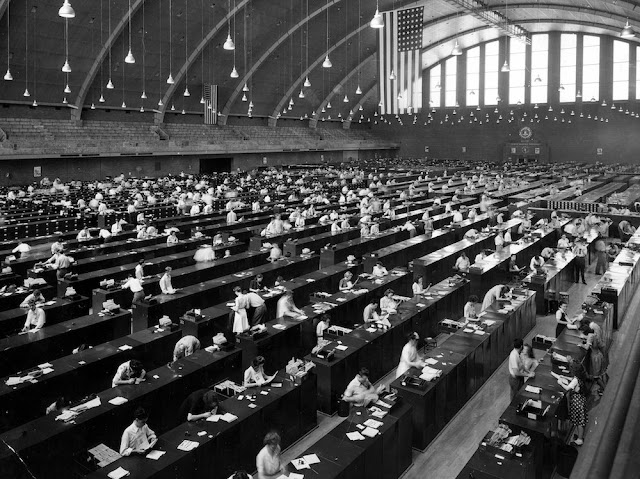The following photos give us a fascinating look inside the FBI’s overflow filing system. Housed during World War II in the Washington, D.C. Armory, the FBI’s archive collected over 23 million cards and 10 million fingerprint records, with around 400,000 new cards added every month.
(Photos by George Skadding/The LIFE Picture Collection/Getty Images)
Around the war, the federal government invested huge resources into the FBI to investigate potential defectors and spies. President Roosevelt, for one, was concerned about the lure of Communism and the subsequent threat to democracy. By the end of 1943, the FBI employed around 13,000 people.
The French scientist Paul-Jean Coulier developed a method to transfer latent fingerprints on surfaces to paper using iodine fuming. It allowed the London Scotland Yard to start fingerprinting individuals and identify criminals using fingerprints in 1901. Soon after, American police departments adopted the same method and fingerprint identification became standard practice in the United States.
(Photos by George Skadding/The LIFE Picture Collection/Getty Images)










.jpg)






0 comments:
Post a Comment